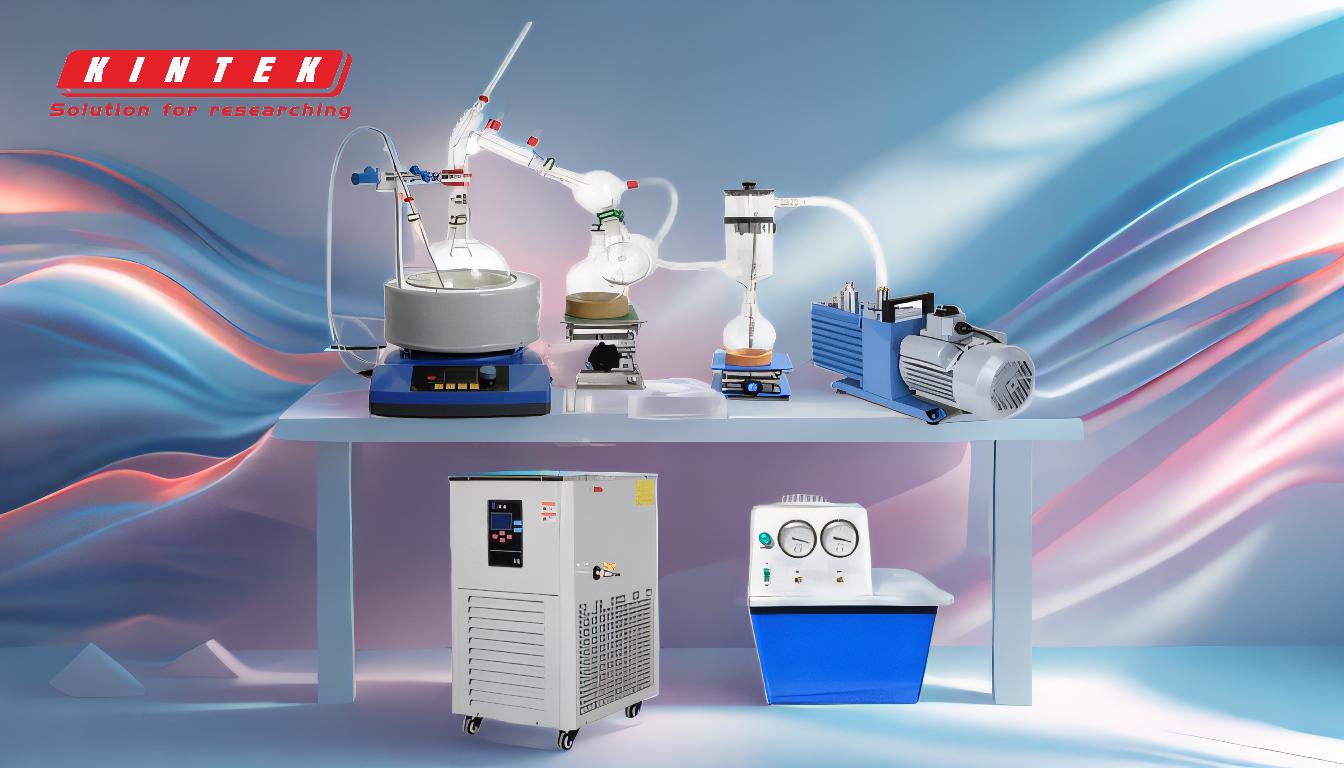Short path distillation is a specialized technique used primarily for the purification and separation of liquid mixtures, particularly those containing heat-sensitive compounds. It operates under high-vacuum conditions, which reduce the boiling points of the components, allowing for separation at lower temperatures. This minimizes thermal degradation and is especially beneficial for industries like pharmaceuticals, food, and petroleum, where maintaining the integrity of heat-sensitive compounds is crucial. The process involves a short distance between evaporation and condensation surfaces, making it efficient, space-saving, and cost-effective. It is widely used for isolating specific components, removing volatile solvents, and producing high-quality purified substances.
Key Points Explained:

-
Purpose of Short Path Distillation:
- Short path distillation is primarily used for purification and separation of liquid mixtures, especially those containing heat-sensitive compounds.
- It is ideal for isolating specific components from complex mixtures, such as in pharmaceuticals, food, and petroleum industries.
-
High-Vacuum Conditions:
- The process operates under high-vacuum conditions, which significantly reduce the boiling points of the components in the mixture.
- Lower boiling points allow for separation at lower temperatures, minimizing the risk of thermal degradation of sensitive compounds.
-
Short Distance Between Evaporation and Condensation:
- The term "short path" refers to the minimal distance between the evaporation surface and the condensation surface.
- This short travel distance reduces the heat required and ensures that vapor molecules condense quickly, preserving the integrity of the compounds.
-
Advantages of Short Path Distillation:
- Gentle on Heat-Sensitive Compounds: The low evaporation temperatures and short residence times ensure minimal thermal stress, making it suitable for delicate substances.
- Efficient and Quick: The process is faster compared to traditional distillation methods due to the reduced pressure and shorter path.
- Space and Cost-Effective: It does not require large equipment, making it suitable for small-scale operations or those with limited space and budget.
-
Applications in Various Industries:
- Pharmaceuticals: Used for purifying active pharmaceutical ingredients (APIs) and isolating specific compounds without degrading them.
- Food and Beverage: Employed to extract and purify essential oils, flavors, and other heat-sensitive components.
- Petroleum Refineries: Utilized for separating and purifying hydrocarbon compounds.
- Chemical Labs: Commonly used for small-scale purification of chemical compounds.
-
Examples of Equipment:
- Wiped Film Machines: These are commonly used in short path distillation to create a thin film of the liquid, enhancing evaporation efficiency.
- Kugelrohr: A type of short-path distillation apparatus used in laboratories for small-scale distillations.
- Standard Pot Stills: Adapted for short-path distillation to minimize thermal degradation.
-
Process Mechanism:
- The liquid mixture is heated under vacuum, causing the more volatile components to evaporate.
- The vapor travels a short distance to the condensation surface, where it is cooled and collected as a purified distillate.
- The reduced pressure and short path length ensure that the process is gentle and efficient.
-
Suitability for Small-Scale Operations:
- Short path distillation is particularly advantageous for small-scale operations or when working with limited quantities of a compound.
- It is also beneficial for research and development purposes, where high purity and minimal degradation are critical.
-
Comparison to Traditional Distillation:
- Traditional distillation often requires higher temperatures and longer processing times, which can degrade heat-sensitive compounds.
- Short path distillation, by contrast, offers a gentler and more controlled environment for separation, making it the preferred method for sensitive materials.
-
Key Considerations for Equipment Purchasers:
- When selecting short path distillation equipment, consider factors such as vacuum capability, heating and cooling efficiency, and material compatibility.
- Ensure the equipment is suitable for the specific scale and type of compounds you intend to process.
- Look for systems that offer ease of operation and maintenance, as well as scalability for future needs.
In summary, short path distillation is a versatile and efficient technique for purifying and separating liquid mixtures, particularly those containing heat-sensitive compounds. Its ability to operate under high-vacuum conditions, combined with the short distance between evaporation and condensation, makes it a gentle and effective method for industries requiring high-quality purified substances.
Summary Table:
| Key Aspect | Details |
|---|---|
| Purpose | Purification and separation of heat-sensitive liquid mixtures. |
| High-Vacuum Conditions | Reduces boiling points, enabling lower-temperature separation. |
| Short Distance | Minimal travel between evaporation and condensation surfaces. |
| Advantages | Gentle on compounds, efficient, space-saving, and cost-effective. |
| Applications | Pharmaceuticals, food, petroleum, and chemical labs. |
| Equipment Examples | Wiped film machines, Kugelrohr, standard pot stills. |
| Suitability | Ideal for small-scale operations and R&D. |
| Key Considerations | Vacuum capability, heating/cooling efficiency, material compatibility. |
Ready to enhance your purification process? Contact us today to find the perfect short path distillation solution!












